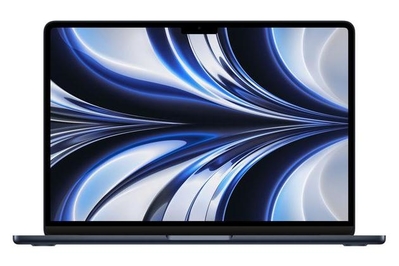If you are looking for a MacBook that suits most people’s needs, the 13-inch M2 MacBook Air is the best option. It is sufficiently powerful and features a fantastic display in addition to its sleek and lightweight design. You can find further details about the M2 MacBook Air in our guide to the best MacBooks.
Apple is set to launch new M3-powered versions of the 13-inch and 15-inch MacBook Air on March 8, with pricing starting at $1,100 and $1,300, respectively. The 13-inch M2 MacBook Air will continue to be available as the entry-level choice at a slightly reduced price of $1,000. Although the 15-inch M2 MacBook Air is a great laptop, Apple will be discontinuing that model (although it may still be accessible through third-party retailers). We will be evaluating the new MacBooks soon and will update our recommendations accordingly.
The MacBook We Suggest

The 2022 M2 MacBook Air features an updated design, a brighter screen, an improved webcam, and reintroduces the fan-favorite MagSafe port.
Considering the MacBook Pro?
If you are in need of a higher-performance MacBook Pro, we advise against opting for the 13-inch model with an M1 or M2 chip, even if it appears to be a good deal. Neither model offers sufficient power for professionals, and both come with a cooling fan that can be bothersome compared to the silent MacBook Air.
We recommend Apple’s 14-inch and 16-inch MacBook Pros for those requiring additional processing power, such as professional media editors, coders working on large projects, and 3D designers. These Pro laptops sacrifice some of the Air’s best features, like a silent fanless design and lighter weight, for increased power. The Pro models are pricier, heavier, bulkier, and less convenient to carry around. While this might not be an issue if the laptop enables you to handle professional tasks on the go, it may not be worth the trouble and expense for everyone else.
MacBooks equipped with Apple’s older M1 Pro and M1 Max chips still offer good performance. In our tests, they exported 4K video at a rate comparable to many Intel-based Windows laptops from the 13th generation. However, there is a slight speed discrepancy compared to the latest models. Initially, the M1 Pro-based model we tested took 3 minutes and 12 seconds to export a two-minute 4K test clip, whereas the M3 Max-based model completed the task in just 1 minute and 45 seconds. While this variance is noticeable, the overall time on either machine is reasonable for exporting a short video. If saving $500 is more important to you than waiting a few extra seconds for a video clip to export each day, it could be a worthwhile trade-off. We have found that Apple’s refurbished-items site consistently offers discounted M1 MacBooks.
If you currently own a MacBook with an M2 Pro or Max chip, there is little incentive to upgrade to an M3-equipped model. Each chip generation–from M1 to M2 to M3–has shown a 20% to 25% speed improvement according to our testing, which is significant. However, all chips are fast, and unless speed is crucial, you can save money by waiting a few extra seconds for video rendering and exporting.
One of Apple’s latest MacBook Pros is the entry-level 14-inch model with an M3 chip. (You can also opt for a more expensive 14-inch Pro with an M3 Pro or M3 Max processor.) We do not recommend the cheapest M3 model, as most users may not benefit from the additional features of the MacBook Pro, and most professionals do not prefer a relatively underpowered M3 chip. The M3 MacBook Pro is around a pound heavier than the MacBook Air and considerably thicker. Additionally, we believe that most users are unlikely to require the extra ports on the Pro, such as the SD Card reader and HDMI port. The models featuring the M3 Pro and M3 Max chips also offer an extra USB-C port absent in the M3 version.
The primary attraction of the M3 MacBook Pro is its lower price with Apple’s exceptional pro-level XDR Display. Nevertheless, both the Air and Pro displays exhibit impressive color accuracy, and unless you are editing HDR video, the XDR display’s 1,600-nit peak brightness may be unnecessary. Content may appear more vibrant on the XDR display, but it is primarily intended for content creation rather than consumption.
While the M3 MacBook Pro is priced at $1,600, this cost only includes 8 GB of RAM, which may not be sufficient for a modern editing laptop.
The amount of RAM, or unified memory, a MacBook has is akin to the size of your physical workspace. With 8 GB, you have a smaller office desk, which is adequate for documents, some spreadsheets, and perhaps a few magazines. Just as more space is required for drafting plans or developing photos, more memory is necessary for digital tasks. Upgrading to 16 GB of unified memory adds $200 to the price, making the cheapest recommended configuration $1,800. At this stage, opting for a MacBook Pro with the M3 Pro chip, which provides 18 GB of unified memory and better performance than the non-Pro chip model, may be a more beneficial choice.
This article has been reviewed by Signe Brewster and Caitlin McGarry.









